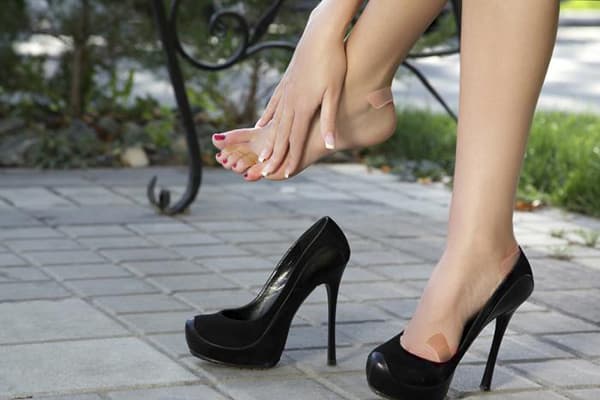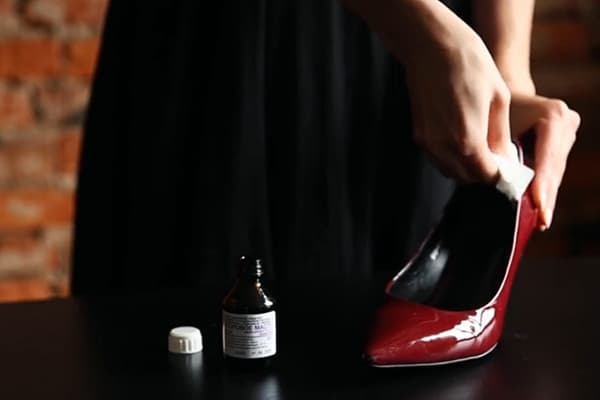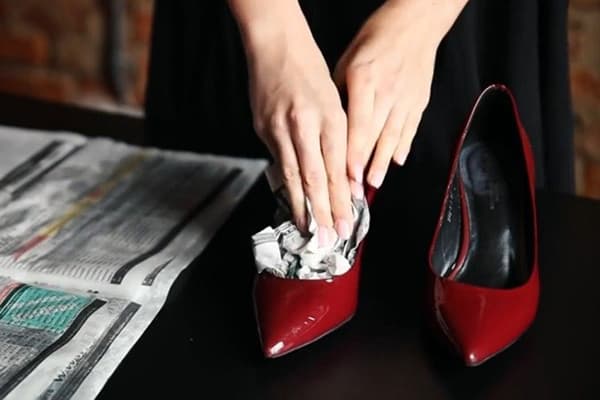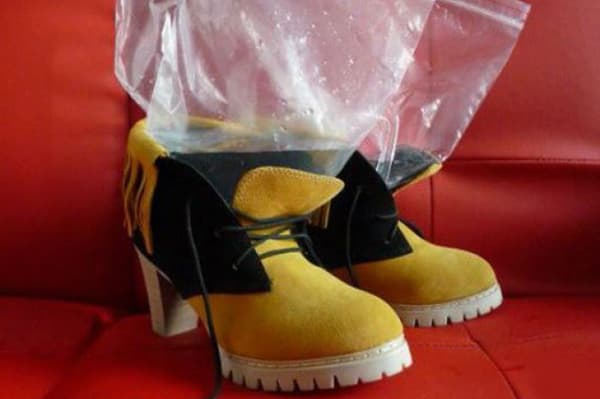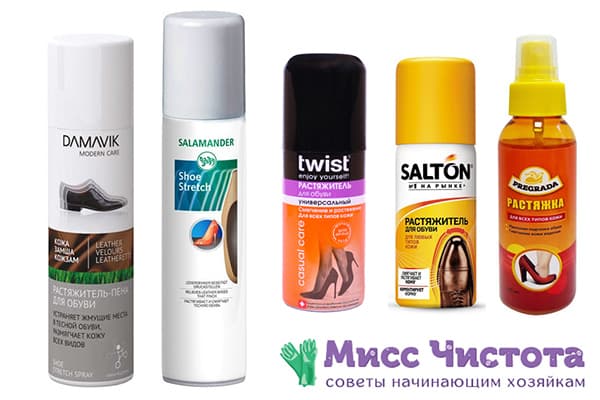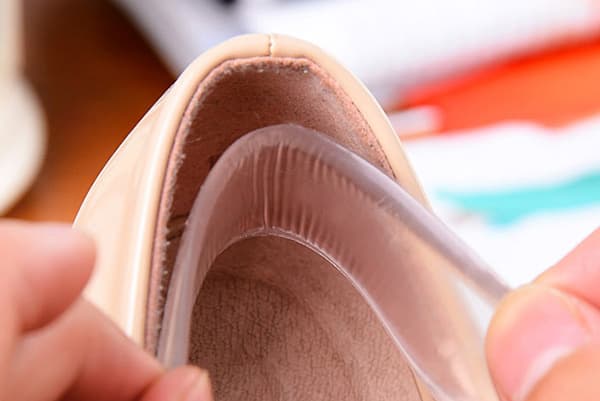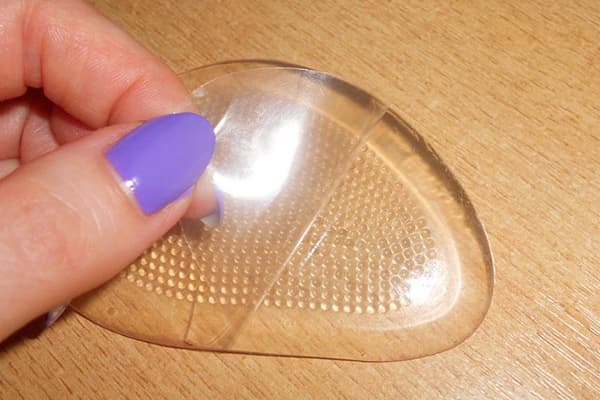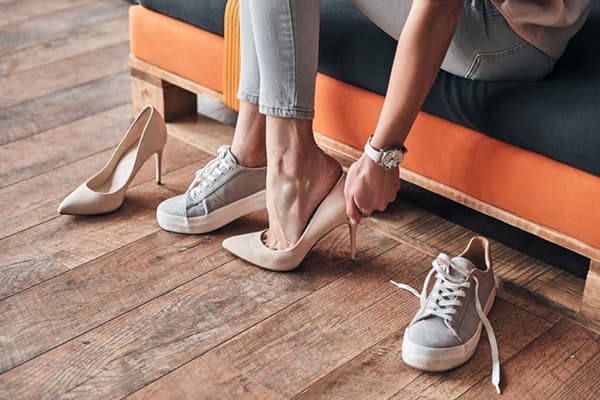What to do with shoes so as not to rub?
Content:
Often the joy of acquiring new shoes or shoes is replaced by disappointment - hard edges rub calluses on the heels, a sock puts strong pressure on the fingers, a narrow block, like a vice, squeezes the foot. Do not get upset and rush to the store for a new pair, because there are many ways to make sure that new shoes do not rub. To stretch the pads and soften the material using improvised means and professional sprays, and to protect the skin of the feet from rubbing - special stickers, anti-slip insoles and tabs.
Why are shoes rubbing?
Before embarking on the next pair, it is useful to find out the reasons - why rubs shoes?
Corns may appear in the following cases:
- the shoes are made of coarse, hard material and have thick internal seams;
- the size of the pads does not match the size of the legs - more or less;
- the shoe has a slight rise;
- individual features of the structure of the foot are manifested;
- severe sweating in the foot area;
- I got an uncomfortable model.
In addition, you can get corns in the most unexpected places simply because of the habit of some kind of shoes. For example, if a person has never put on Vietnamese slippers, then after an hour's walk they will probably rub a couple of corns.
New shoes should be bought in the late afternoon, when the legs are slightly swollen. Then during the day, shoes or shoes will definitely not rub.
Handy tools for stretching tight shoes
Close uncomfortable shoes can be "fixed" at home. There are several proven methods for this.
- Vodka, alcohol.
Using vodka or alcohol, you can soften the hard edges of shoes and shoes. The main thing is to check the paint for durability in an inconspicuous area before starting the procedure, since alcohol-containing substances can discolor materials.
The cotton pad is moistened in vodka and wiped the inside of the shoe, paying particular attention to the edges. When the material gets wet properly, knead it with your fingers, trying to make it softer. You can put on a couple and walk around the apartment a bit, and if necessary, repeat the treatment the next day.
- Castor or sunflower oil, glycerin.
These substances have a softening effect, and equally have a positive effect on shoes and on the skin of the feet. Having dipped a cotton pad in oil or glycerin, they treat the inner surface of the material without missing seams, and then knead with your fingers. This procedure is useful not only for a new pair, but also for boots that have become rougher after winter downtime.
- Wax, soap.
If the shoes are rubbed on the heels, the backs are smeared with solid soap or a candle inside. This reduces friction. The procedure is repeated until the steam is carried.
- Hammer.
High boots, boots, boots and other shoes made of hard leather can be softened with a hammer. A piece of soft material is applied to the problem area and, gently tapping, break with a hammer. The method is not suitable for varnished models, since the glossy surface may crack.
- Beer.
An excellent softener for suede shoes. Sock and backs are saturated with a foamy drink, and then knead with hands. When the result is achieved, the boots must be cleaned and ventilated.
- Paper.
For work, it is better to take white unglazed paper, although you can do without newspapers. Lumps of wet paper are laid inside shoes or boots and left for a day - until dry.Do not force events - put the problematic pair on the battery or take it out on a draft. The paper should dry for a long time and be sure to dry to the end.
- Water bags.
This method is based on the ability of water to expand when frozen. In small plastic bags, they collect so much water to fit inside the model, and put the shoes overnight in the freezer. Frozen water will open the cramped block, and the shoes will become a little larger.
The easiest and safest way for shoes is to wrap a box with a problem pair with a wet terry towel and leave it overnight. The box will have to be thrown out, but the shoes will become softer and stop rubbing.
Special tools
Stretching tight shoes with the help of improvised tools is cheap and convenient. However, with this approach, there is always the risk of ruining expensive shoes. Today, to solve the problem, special sprays and foams for stretching are developed, which are easy and safe to use.
Sprays
Basically, the rules for working with sprays from different manufacturers are the same: the composition is sprayed inside and outside the shoe, put on shoes on the foot (preferably on a nylon or cotton toe) and wear for half an hour. You should not expect that the product will greatly increase in length, but the sides and nose will become much softer, and you won’t have to rub your feet again with shoes. The effect of the use of industrial stretch marks becomes noticeable after several treatments.
Here are a few tools that have collected positive customer reviews:
- Salamander shoe stretch - for genuine leather and suede;
- Pregrada - for all skin types;
- Damavik - for artificial and genuine leather, suede;
- TWIST - for leather, suede, velor, nubuck;
- Salton - for smooth leather, suede, patent leather, nubuck.
Protective strips
In shoe stores, along with a new pair, you can buy protective strips and heels that are glued inside the shoe for comfortable wearing. To accurately determine the place of the possible appearance of corns, we must recall the experience with past shoes or sandals. Where they rubbed most of all, there they glue the protective strip.
Non-slip insoles
Insoles with anti-slip coating will help to adapt to shoes, the size of which is slightly larger than desired. Especially if the model is high-heeled. Do not do without this device and those who sweat profusely feet. The insoles absorb excess fluid, the leg remains dry and does not slip inside the sandals. On sale you can also find special pads for stretching new shoes to the desired size.
In the pharmacy you can buy a pencil against corns. It contains nutritious, emollient, and sometimes antiseptic components. Before going out in new shoes, the feet in those places where scuffs may appear are pre-lubricated with a pencil and relieve themselves of troubles for the whole day. From the best side, Medifit and Compeed pencils have proven themselves.
How to distribute shoes?
Wearing shoes is not easy, requiring a lot of time and patience. Do not think that you can put on a tight pair in the morning, go all day, and remove comfortable soft shoes by the evening. Such an experiment is likely to end with legs crushed in blood and a purchase shelved in a long box.
Shoes should be worn gradually, for 1-2 hours over several days. After walking a bit, you need to inspect the feet and find places of redness. It is here that the appearance of corns is planned. Next time, putting on a problem pair, it is necessary to seal these places in advance with a band-aid.
Close shoes should not be worn on the bare foot, especially if this is the first time. Nylon golf or a sock allows you to get less scuffs. After several sessions of wearing, socks can be abandoned.
During the wearing, it is advisable to use special preparations or folk remedies described above. This will speed up the process and save you from unnecessary inconvenience.Well, if the shoes do not want to adapt to their mistress, you need to contact the shoe workshop for the help of professionals.
